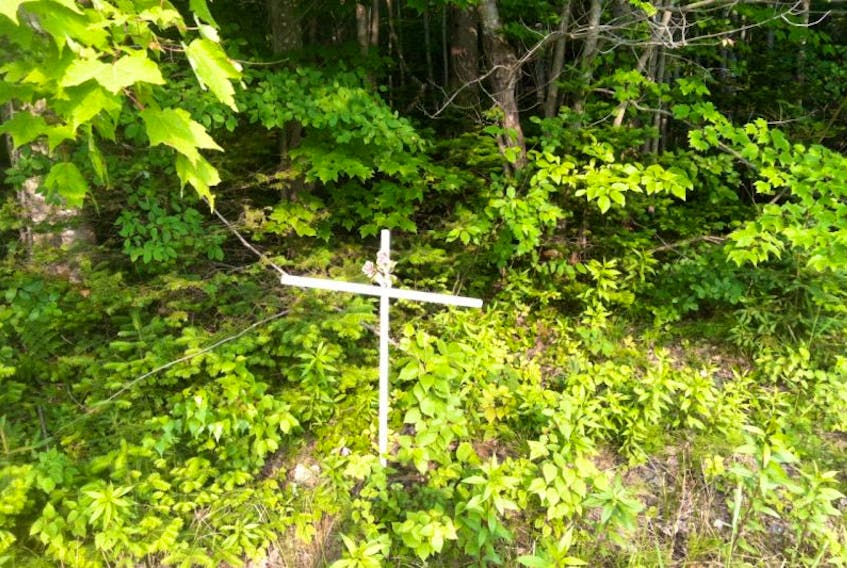The most moving roadside memorial I’ve ever seen wasn’t huge or ostentatious or even, for years, visible.
Just a squat grey stone cross, hidden deep in the alders until it emerged all at once into the sunlight unexpectedly along a stretch of the Trans-Canada Highway.

Well, “emerged” might be the wrong word. It was forced into view by a huge Caterpillar excavator with a boom-arm flail of spinning chains, the excavator trundling along the highway right-of-way clearing sightlines so that wildlife would be less likely to spring in front of unsuspecting drivers.
One day, nothing but alders, the next, the head and shoulders of a permanent but largely forgotten memorial.
You understand why people put up the memorials: they’re a waypoint, a fixed spot you’ll never forget, but that you want to make sure others don’t forget either. It’s hard to explain to someone who hasn’t experienced it, but when a tragedy happens on an otherwise anonymous spot of ground, there’s an almost pressing need to mark that this is a place where something important happened — a spot where the world changed.
For me, they’re always just one part of a larger story. But they last for ages — some carefully maintained, almost manicured, others falling quickly into disrepair — and there are an ever-growing number of them. Some are full-on headstones. Others are simpler, surrounded sometimes by fading displays that don’t stand up to Atlantic weather: plastic flowers, stuffed animals, toppled flowerpots spilling soil.
And that growth in number led to governments trying to regulate them. Are they a distraction for drivers? Or are they a valuable reminder of the hazards of the road, even if you don’t know the personal details of every road fatality they mark?
The Halifax Regional Municipality (HRM) is the latest government to grapple with the issue.
This week, the HRM council looked at drawing up rules for the memorials.
The memorials are both glaringly public and intensely private.
I’ve written about roadside memorials in several Atlantic provinces, and I understand why the Halifax bureaucrats looking at the memorials would write this in a briefing note for councillors: “Due to the lack of policy, there have been roadside memorials removed from HRM Right of Way, which has caused distress to those members of the public who placed the memorials, as well as HRM staff involved in the removal.”
I’ve been given a bit of distress for writing about the markers, too. The memorials are both glaringly public and intensely private. I’ve been told in no uncertain terms that the tragedies behind memorials aren’t mine to write about, and that the limited information you can track down on old accidents merely tears open old scars, especially when others involved have tried to move forward and build new lives.
Still, the HRM is convinced it’s better to have some rules than to have none — especially if having none means taking down a memorial.
But maybe not the rules staff suggested.
Among the HRM’s proposed rules? “Only one memorial per individual or event may be installed. A memorial may be placed for a period of a maximum of 12 months. During this period, the Municipality reserves the right to relocate or remove the memorial if operational issues arise. The name and telephone number of the person responsible for the memorial and the date of installation must be included on the memorial.” The staff plan suggested limiting the size and placement of memorials, and for people who want a memorial in place longer than 12 months, the suggestion was to donate to the HRM’s Gifts for Parks program, donating money for a marked bench or a tree planting.
Good luck.
Monuments may end up looking forgotten — the people they memorialize aren’t.
One year, and then before removal?
Well, it’s hard to set fixed regulatory limits on grief.
The rules are going back for a review.
Russell Wangersky’s column appears in 36 SaltWire newspapers and websites in Atlantic Canada. He can be reached at [email protected] — Twitter: @wangersky.
MORE FROM RUSSELL WANGERSKY









